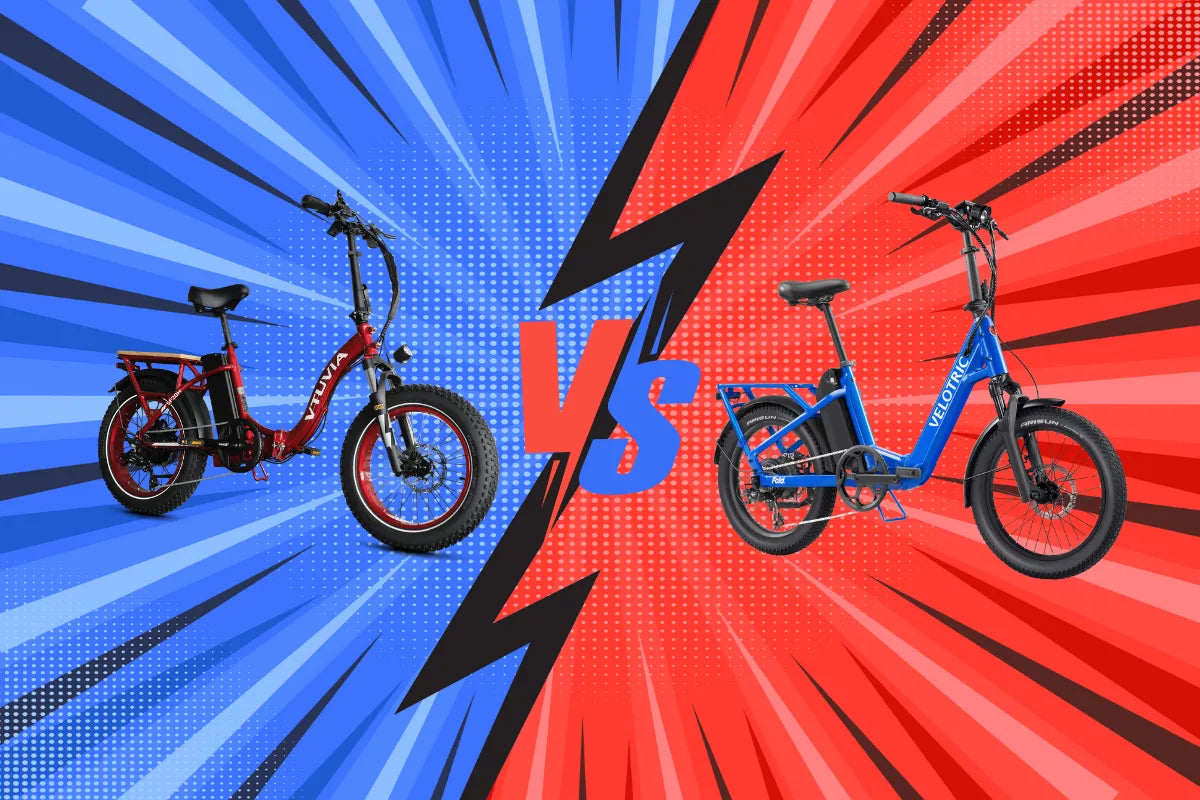As spring arrives with warmer temperatures and sunny days, more and more people are choosing electric bicycles (e-bikes) for daily commuting and recreational rides. While enjoying the freedom of cycling, it is essential not to overlook one of the most crucial components of an e-bike—the battery. The battery not only determines the range of your rides but also impacts the bike's performance and longevity. Understanding the different charging methods, how to care for your battery, and avoiding common battery-related issues are key to ensuring a smooth and enjoyable e-bike experience.
Battery Charging Methods: Two Options

There are two main options for charging your e-bike’s battery: removing the battery to charge it separately or charging it while it's still on the bike. Each method has its own set of benefits, and understanding how each works can help you make the best choice for your riding needs.
1. Removing the Battery to Charge
For most e-bikes, removing the battery for charging is a common and convenient option. The advantages of this method include:
- Higher Safety: By removing the battery, you can charge it indoors, away from external weather conditions (such as heat or humidity) that could affect the battery’s health.
- Extended Battery Life: Charging the battery off the bike helps avoid any potential damage caused by vibrations or shocks during rides.
- Better Charging Environment: You can choose a dry, temperature-controlled area for charging, ensuring the battery is not exposed to extreme weather conditions that could harm its performance.
When you charge your battery indoors, you avoid the risks posed by outdoor environments, ensuring the battery remains in optimal charging conditions. Additionally, if you have a spare battery, charging one while you use the other won't affect your riding experience. You can easily swap out the charged battery and continue your ride without interruption.
2. Charging on the Bike
Another option is to charge the battery directly while it remains on the bike. This method is convenient for those who prefer not to remove the battery every time they charge it. The advantages of charging on the bike include:
- Convenience: No need to remove the battery each time you want to charge it. Just plug in the charger and start charging, making it ideal for riders who need to charge quickly and do not have a designated charging area.
- Time-saving: You can charge your bike while parked, saving time and avoiding the hassle of removing and reattaching the battery.
However, charging on the bike has its drawbacks. Vibration from the bike and environmental factors (like heat and cold) can impact charging efficiency, and charging in extreme conditions might shorten the battery’s lifespan. Therefore, it is essential to ensure that you charge in a stable, temperature-controlled environment for the best results.
Our Batteries: LG Lithium-Ion Batteries
At VTUVIA, we use LG lithium-ion batteries to power our e-bikes, ensuring that every rider enjoys a reliable, long-lasting, and safe cycling experience. LG batteries are known for their excellent performance and longevity, trusted across various industries, including electric vehicles and consumer electronics. By choosing LG batteries, we ensure that our e-bikes provide strong, consistent power throughout their life cycle.

- High Energy Density: LG lithium batteries offer a high energy density, meaning they can deliver more power while being lighter and more compact.
- Long Lifespan: LG batteries are designed for many charge cycles, ensuring that they last longer and perform consistently over time.
- Enhanced Safety: LG batteries undergo stringent quality control during manufacturing, offering excellent protection against overcharging, over-discharging, and overheating, ensuring rider safety.
Whether you are embarking on a long-distance ride or using your e-bike for daily commutes, LG batteries provide the stability and reliability needed to power your bike, giving you the confidence to ride longer and farther.
View VTUVIA Replacement Batteries
Battery Care Tips: Extend Your Battery's Lifespan
Regardless of whether you prefer to remove your battery to charge or charge it on the bike, these battery care tips can help you extend the lifespan of your battery and maintain optimal performance:
1. Avoid Over-Discharging
Try to avoid letting your battery completely discharge. Constantly draining the battery to zero can negatively affect its health. It is recommended to keep the battery’s charge level between 20% and 80% to reduce strain on the battery and prolong its life.
2. Use the Original Charger
Always use the charger provided by the e-bike manufacturer. Using an incompatible charger can result in insufficient charging or even damage the battery, posing safety risks.
3. Charge in a Suitable Environment
Avoid charging the battery in extreme temperatures. The ideal charging temperature for lithium-ion batteries is between 50°F and 86°F (10°C to 30°C). Charging in excessively cold or hot conditions can damage the battery, reducing its overall lifespan.
4. Regularly Check the Battery's Condition
Periodically inspect your battery for any signs of wear, such as bulging or leaking. If you notice any issues, it's important to replace the battery to avoid further complications and ensure your safety.
Conclusion
Spring is the perfect time to get out and enjoy cycling, and managing your e-bike’s battery is an essential part of maximizing your experience. Whether you choose to remove the battery to charge it or charge it while it’s on the bike, understanding the proper charging methods and maintaining your battery properly will help you get the most out of your rides. With LG lithium-ion batteries, VTUVIA ensures you have a reliable, powerful, and safe source of energy for all your cycling adventures. Follow these charging tips, and you'll be ready to take on any ride with confidence, knowing your e-bike’s battery will always be in top shape!





Share:
Do You Have to Constantly Pedal an Electric Bike?
How to Choose the Best VTUVIA Electric Bike for Your Needs